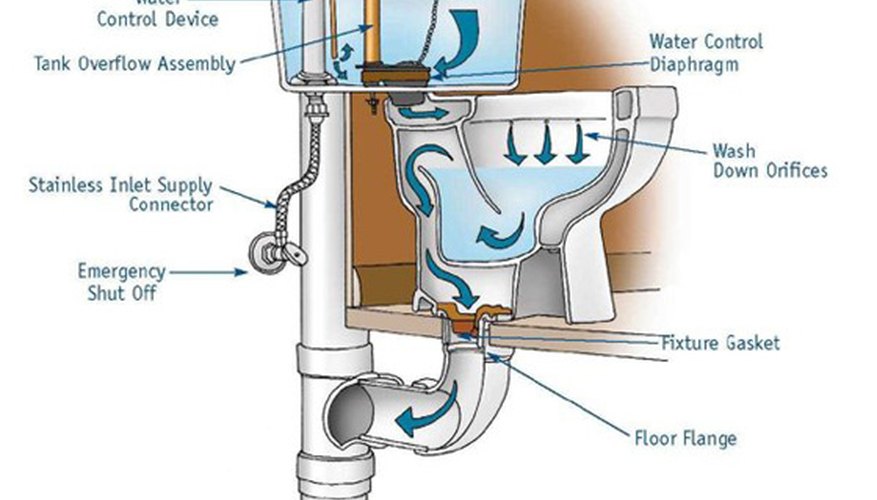Plumbing is always a challenge, especially if you are required to crawl under the house to do it. Installing toilet drainpipes correctly is crucial to the overall efficiency of bathroom plumbing. A lot of it has to do with the proper ventilation of drains. If there is no air supply for the drains, they simply will not work.
Cut a 2-inch hole through the bottom plate of the wall behind the toilet with a hole saw. This will be for the vent pipe coming from under the floor. Secure the toilet flange to the floor with deck screws. Be certain that the slots provided in the flange for the base of the toilet are in the correct position to insert the bolts for the base of the toilet. If the flange has to be offset, see "Installing an Offset Toilet Flange" in the References part of this article.
- Plumbing is always a challenge, especially if you are required to crawl under the house to do it.
- Secure the toilet flange to the floor with deck screws.
Cut a short section of the 1½-inch pipe with the skill saw. Be certain it is long enough to fit from underneath the floor into the wall. Slip it through the 2-inch hole. The rest of the drain line will be installed from under the house.
Apply PVC cleaner (or primer) to the elbow and the flange followed by the glue. Install the elbow onto the flange from underneath the floor giving it a slight twist. Be certain it "seats" and is facing the correct direction.
- Cut a short section of the 1½-inch pipe with the skill saw.
- Install the elbow onto the flange from underneath the floor giving it a slight twist.
Install the reducer to the short section of the reduced size vent pipe you cut in Step 2. Install the "T" on the end of the elbow so that one end of it points up for venting and the other is down. Secure the reducer to the "T" facing up.
Install sections of the toilet drain pipes using the method described in Step 2. Break up the different sections of pipe as needed to connect to the line leading to the sewer or septic tank. Be certain there is enough of a descent to keep the water flowing to its destination.
Install plumbers strap around the pipe under the house. Measure a piece long enough to reach around the pipe and secure to the floor joists. It can be secured with box nails or screws.
- Install the reducer to the short section of the reduced size vent pipe you cut in Step 2.
- Measure a piece long enough to reach around the pipe and secure to the floor joists.
Cut a hole through the top plate of the wall for the vent pipe. See "Plumbing a Vent System" in the Reference section for more information on venting plumbing. Secure a pipe coupler to the end of the pipe coming up from the floor. Cut a piece of vent pipe long enough to reach above the ceiling. From there, cut and secure enough vent pipes to go through the roof.
TIP
Cut the PVC pipe with a skill saw. Clean the burrs left from the saw before assembling the pipes.
WARNING
Do not leave power tools unattended in the presence of children. Do not use the PVC cleaner and glue without proper ventilation.
